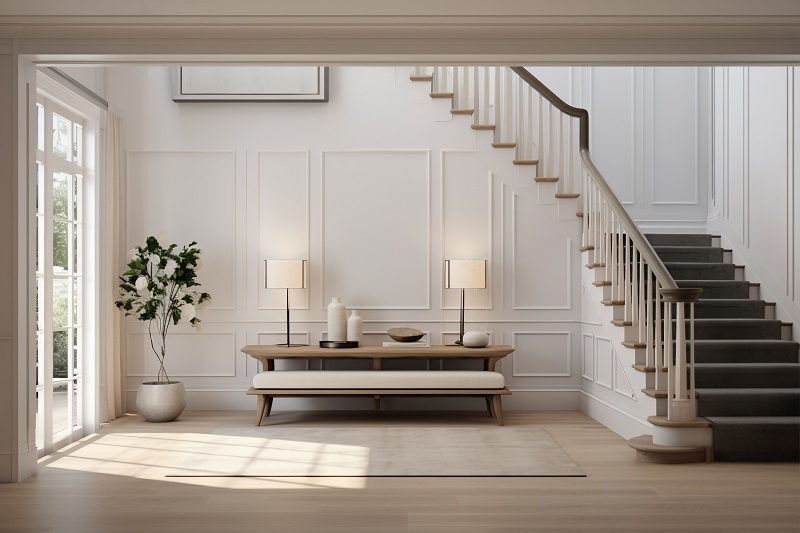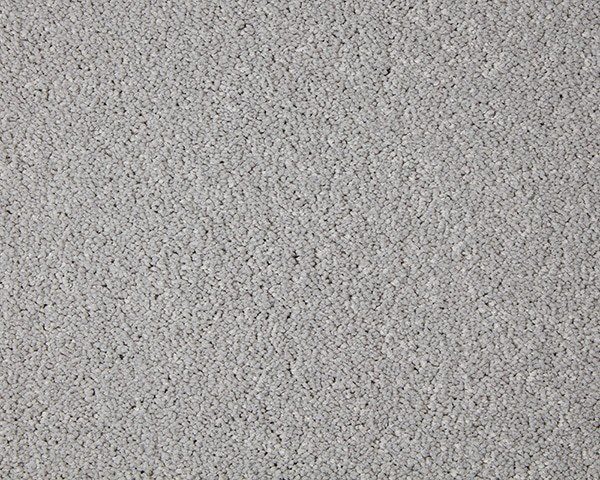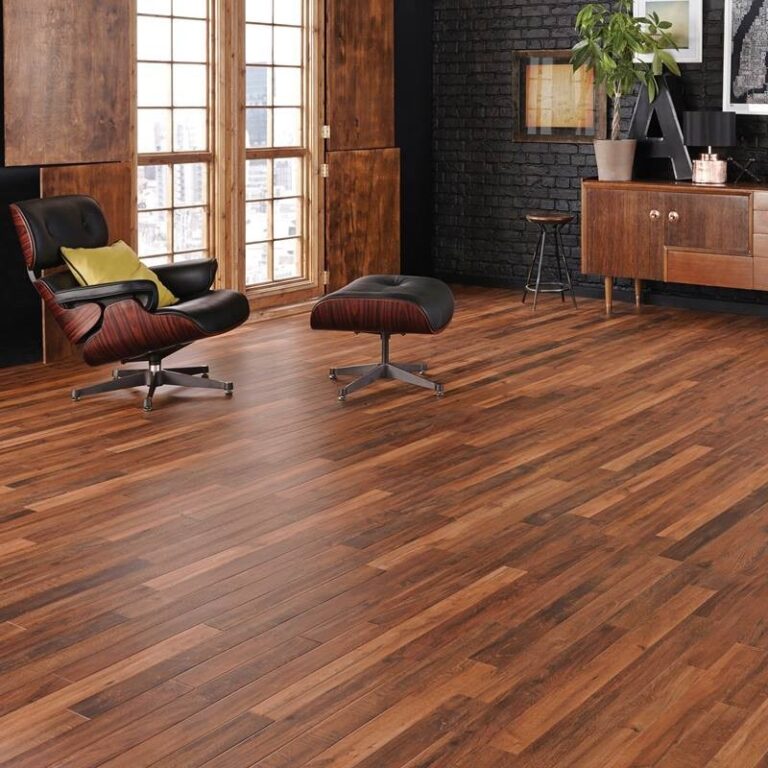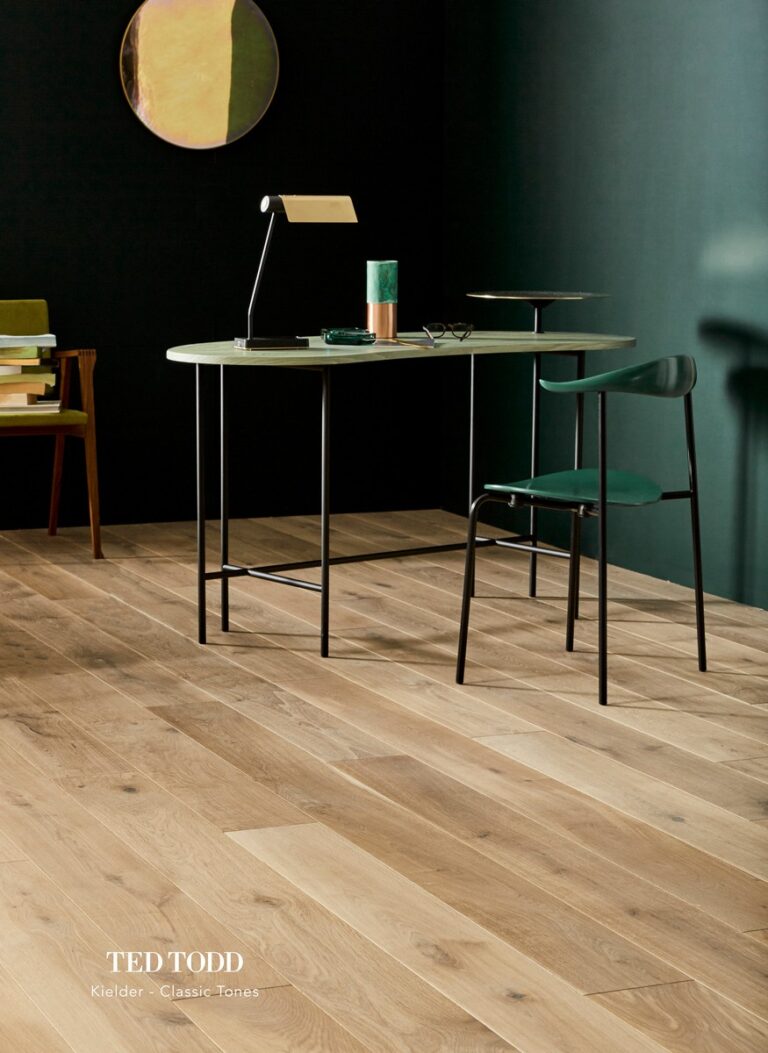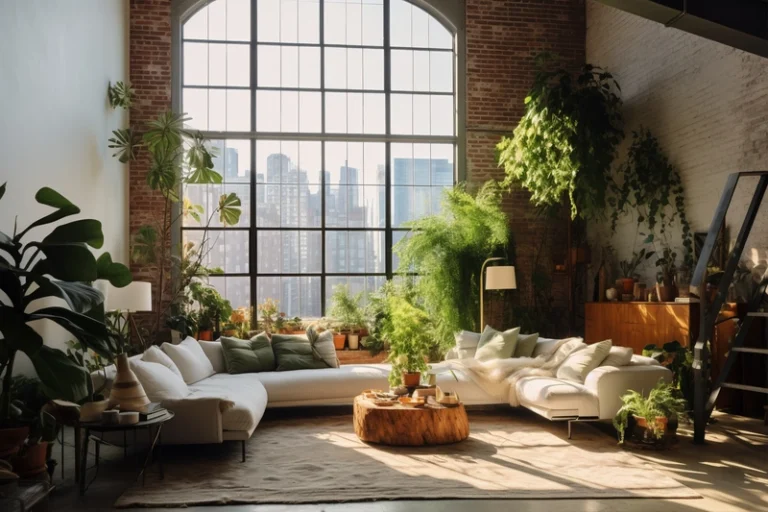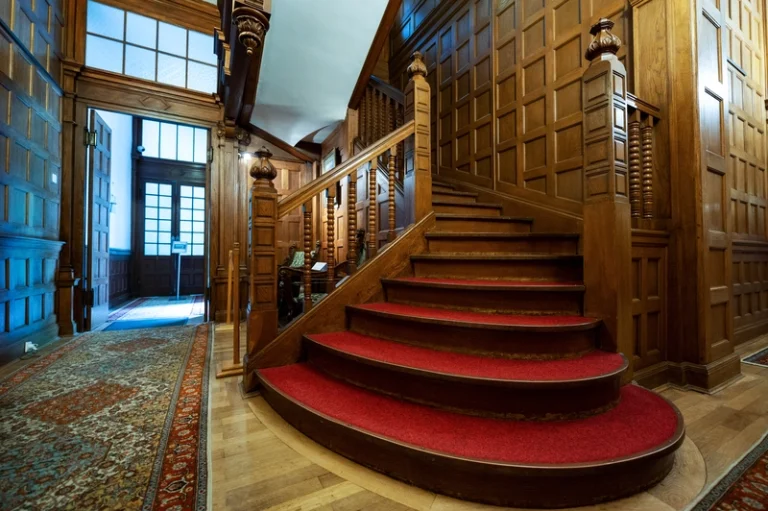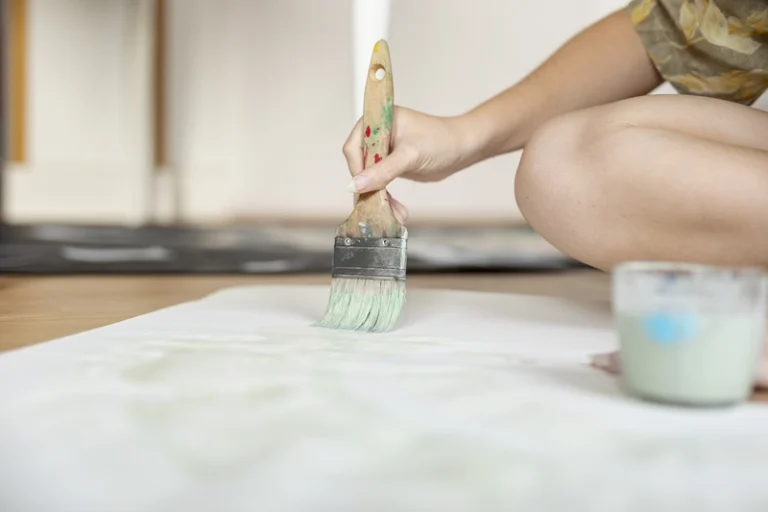Are you tired of dealing with the upkeep of carpet on your stairs? Looking for a more durable and stylish option? We will explore the various alternatives to carpets on stairs, including hardwood or laminate flooring, vinyl flooring, tile flooring, and carpet tiles.
We’ll also discuss the pros and cons of each option and provide tips on how to choose the right alternative for your stairs based on style, durability, and safety.
Stay tuned to learn how to install and maintain these alternatives for a fresh new look in your home!
Why Choose an Alternative to Carpet on Stairs?
Looking for alternatives to carpet on stairs can offer a fresh and stylish update to your home’s interior design.
Choosing alternatives to traditional carpeting on stairs not only enhances the visual appeal of your space but also brings a touch of modernity and sophistication to your home. Materials like hardwood, laminate, or even tile can add a unique charm to your staircase, making it a focal point in your living area. These alternatives are known for their exceptional durability, resisting wear and tear over the years, unlike traditional carpets that may show signs of ageing and wear relatively quickly.
The Different Types of Alternatives to Carpet on Stairs
When considering alternatives to carpet on stairs, you have a variety of options to choose from, including hardwood or laminate flooring, vinyl flooring, tile flooring, and carpet tiles.
Each type of material offers unique benefits and aesthetics to enhance the look and feel of your staircase. Each of these materials can transform your staircase into a stylish focal point of your home.
a. Hardwood or Laminate Flooring
Hardwood or laminate flooring is a popular choice of alternative flooring for stairs due to its timeless appeal and durability.
The natural beauty of wood stairs can add warmth and elegance to any home, while laminate flooring for stairs offers a cost-effective and easy-to-maintain option for a modern look.
Hardwood stairs are known for their durability and resistance to wear and tear, making them a long-lasting investment. On the other hand, laminate flooring provides a variety of styles and finishes to suit different interior design preferences.

See product: Elka 8mm V-Groove Country Oak
b. Vinyl Flooring
Vinyl flooring on stairs offers a versatile and budget-friendly alternative to carpets on stairs.s
Vinyl plank flooring, in particular, provides a durable and water-resistant option that is easy to install and maintain, making it ideal for high-traffic areas like stairs. Its robust nature means that it can withstand the daily wear and tear of foot traffic, preventing signs of wear and tear that are often visible on carpeted stairs.
Vinyl flooring comes in a wide range of colours, styles, and textures, allowing you to customise your stairs to suit your aesthetic preferences. This versatility makes it easy to match the flooring with the overall decor of your home, creating a cohesive and visually appealing look.

See product: Luvanto Pace Washed Grey Oak
c. Tile Flooring
Tile flooring can bring a unique and customisable look to one’s stairs. Whether opting for decorative tile patterns or sleek, modern designs, tiled stairs offer a durable and easy-to-clean alternative to traditional carpeting.
One of the advantages of using tile flooring on stairs is the wide range of design options available. From intricate mosaic patterns to simple, solid colours, there is a tile style to suit every taste and home decor. Tile is known for its exceptional durability, making it a long-lasting choice for high-traffic areas like stairs. Maintenance is also a breeze with tile flooring, as spills and stains can be easily wiped clean, unlike carpet which tends to trap dirt and allergens.
d. Carpet Tiles
Carpet tiles provide a practical and customisable solution for stairs. With options for carpet runners, stair risers, and nosing, carpet tiles allow for easy installation, replacement, and design flexibility to suit your style and functional needs.
One of the significant benefits of using carpet tiles on stairs is their versatility. These tiles come in various shapes, sizes, colours, and patterns, allowing you to mix and match to create a unique look for your staircase.
The ease of installation that carpet tiles offer is unmatched. Unlike traditional broadloom carpets, which require professional installation, carpet tiles can be easily laid down without specialised tools or expertise.
The ability to replace individual tiles in case of damage or staining is a huge advantage. Instead of replacing the entire carpeting, you can simply remove and replace the affected tiles, saving both time and money.

See product: Burmatex Go To Blue Grey Stripe
The Pros and Cons of Each Alternative
Each alternative to carpet on stairs comes with its own set of pros and cons. Understanding these factors can help you make an informed decision based on your preferences, budget, and lifestyle.
a. Hardwood or Laminate Flooring
Hardwood or laminate flooring offers durability and timeless appeal for stairs. They may require more maintenance and can be susceptible to scratches and wear over time.
While hardwood flooring is renowned for its classic beauty and elegance, it often comes at a higher cost compared to laminate options. On the other hand, laminate flooring is a more budget-friendly alternative that can mimic the look of hardwood effectively.
One of the significant advantages of hardwood or laminate flooring on stairs is their longevity when properly cared for. Unlike carpets that can wear out and fray, these flooring options can withstand heavy foot traffic without losing their aesthetic charm.
b. Vinyl Flooring
Vinyl flooring is durable, affordable, and easy to maintain, making it a practical choice for stairs. It may lack the warmth and natural feel of hardwood or laminate options.
One of the significant advantages of opting for vinyl flooring on stairs is its exceptional durability, which can withstand heavy foot traffic without showing signs of wear easily. Its affordability makes it a budget-friendly option for those looking to renovate their staircases without breaking the bank. The low maintenance requirements of vinyl flooring further add to its appeal, offering a hassle-free cleaning process that is perfect for busy households.
On the flip side, while vinyl flooring provides practicality and functionality, some may find that it lacks the aesthetic appeal and cosy ambience that hardwood or laminate options bring to a space. The feel underfoot might not replicate the natural warmth and texture that other materials offer, potentially impacting the overall ambience of the staircase.
c. Tile Flooring
Tile flooring on stairs offers a durable and customisable option with a wide range of design choices. Tiles may be cold underfoot and require regular cleaning to maintain their appearance.
One of the key advantages of using tile flooring on stairs is its exceptional durability. Tiles are highly resistant to wear and tear, making them ideal for high-traffic areas like staircases. Tiles offer immense design flexibility, allowing homeowners to choose from various colours, patterns, and textures to suit their style preferences.
In terms of maintenance, tiles are relatively easy to clean compared to carpets. Spills and stains can be quickly wiped away, and regular sweeping and mopping can keep them looking fresh. The cold nature of tiles can be a drawback, especially in colder climates, where they might feel uncomfortable under bare feet.
d. Carpet Tiles
Carpet tiles provide versatility and easy installation options for stairs. They may show wear and tear more quickly than other materials and require regular replacement in high-traffic areas.
On the plus side, carpet tiles offer various design possibilities, allowing homeowners to mix and match colours and patterns for a customised look. This flexibility makes them a great choice for those looking to personalise their staircase aesthetic. The simple installation process of carpet tiles can be a DIY project for many, saving on installation costs. Their modular nature also means that if a tile gets damaged, it can be easily replaced without the need to redo the entire staircase.
How to Choose the Right Alternative for Your Stairs
Selecting the ideal alternative for your stairs involves considering factors such as style, durability, and safety. By evaluating your preferences and needs, you can choose a material that complements your home’s aesthetics and meets your practical requirements.
a. Consider the Style and Aesthetic
When choosing an alternative to carpet on stairs, consider the style and aesthetic you want to achieve.
Incorporating decorative elements into your staircase can transform it into a focal point of your home. Whether you opt for intricate iron railings, elegant wood balusters, or a combination of both, these details can add character and charm to your stairs. Paying attention to flooring patterns and the design of stair treads can create a cohesive look that complements the overall aesthetic of your space. By carefully selecting each component, you can elevate the visual appeal of your staircase and make a lasting impression on anyone who enters your home.
b. Think About Durability and Maintenance
Durability and maintenance play a critical role in choosing an alternative to carpet on stairs. Materials like wood stairs, stone stairs, or vinyl flooring offer long-lasting durability and easy upkeep, while leather or cork treads may require more specialised maintenance.
When opting for wood stairs, it’s essential to seal or varnish them periodically to protect against wear and tear caused by heavy foot traffic. Stone stairs, although durable, may need occasional resealing to maintain their original lustre and prevent staining from spills. Vinyl flooring, on the other hand, is relatively low maintenance, requiring simple sweeping and occasional mopping to keep it looking fresh.
Leather treads can add a luxurious touch to stairs, but they demand regular conditioning to prevent cracking and discolouration. Cork, known for its eco-friendly properties, needs to be sealed properly to resist moisture and stains, making it a durable yet maintenance-intensive choice.
c. Consider Safety and Comfort
Safety and comfort are essential aspects to consider when choosing an alternative to carpets on stairs. Options like carpet runners, hardwood flooring, or vinyl plank flooring can enhance safety by providing grip and stability while ensuring a comfortable and secure staircase.
When considering traction for stair materials, it’s crucial to look for surfaces that offer grip and prevent slipping, especially in high-traffic areas.
- Carpet runners, with their textured surface, provide excellent traction, making them a popular choice for stairs.
- Hardwood flooring, on the other hand, offers a stable and durable option with various finishes that can enhance both the aesthetic appeal and safety of the staircase.
- Vinyl plank flooring provides a slip-resistant surface, making it an ideal choice for households with young children or elderly family members.
How to Install Alternatives to Carpet on Stairs
Installing the new material such as wooden stairs, leather stair treads, cork treads, or carpet tiles.
1. Removing Existing Carpet
Before installing alternative materials, the first step is to remove the existing carpet on the stairs. This process involves carefully detaching the carpet, padding, and any adhesive to prepare the staircase surface for the new material.
Start by loosening the carpet at one corner using a utility knife. Slowly pull back the carpet, rolling it as you go to expose the padding beneath. Once the carpet is fully removed, use pliers to grip and pull out any staples or nails securing the padding to the stairs.
Next, lift and fold back the padding, cutting it into manageable sections if needed for easier removal. Be cautious not to damage the stairs while taking out the padding. If adhesive residue remains on the stairs, apply a commercial adhesive remover following the manufacturer’s instructions to dissolve and wipe away the adhesive completely.
2. Preparing the Stairs
Preparing the stairs for alternative materials involves addressing the surface conditions and ensuring proper adhesion. Whether you have wooden stairs, or stone stairs, or require a resin top coat, proper preparation is key to a successful installation.
For wooden stairs, sanding the surface to remove any existing finish or imperfections is essential before applying alternative materials. This step ensures a smooth and level base for the new material to adhere properly. Stone stairs may require cleaning and sealing to prevent any moisture-related issues that could affect the adhesion of the alternative material. In terms of stair risers and nosing, proper cleaning and priming are crucial to ensure strong bonding.
Resin top coats can be applied to various stair surfaces to enhance durability and resistance to wear and tear. It’s important to follow the manufacturer’s instructions for mixing and applying the resin to achieve the best results. The application of resin top coats not only protects the underlying material but also adds a layer of aesthetic appeal.
3. Installing the Chosen Alternative
Installing the chosen material for the stairs requires precision and attention to detail. Whether the choice falls on wooden stairs, leather or cork treads, laminate alternatives, or vinyl plank flooring, following the manufacturer’s guidelines and best practices is essential for a professional finish.
When working with wooden stairs, ensure they are clean, dry, and free of any existing finishes before starting the installation process. Use a high-quality adhesive suitable for wood to firmly attach the new treads. Measuring accurately and cutting precisely are crucial steps to achieve a seamless look. For leather or cork treads, gentle cleaning and priming might be necessary to ensure proper adhesion. Laminate options require careful alignment to avoid gaps, and the right underlay can enhance durability. As for vinyl plank flooring, a smooth subfloor is vital for a smooth installation, and using a peel-and-stick or click-lock method can simplify the process.
How to Maintain and Clean Alternatives to Carpet on Stairs
Maintaining and cleaning alternatives to carpets on stairs is essential for preserving their appearance and longevity.
- In terms of wooden stairs, regular dusting and polishing can help maintain their natural lustre.
- Stone stairs, on the other hand, require gentle cleaning solutions to avoid damaging the surface.
- Leather and cork treads benefit from conditioning to prevent cracking and maintain their supple texture.
- Vinyl plank flooring is best cleaned with a damp mop and specific vinyl floor cleaners to preserve its finish.
Choose TEKA Flooring for a seamless blend of affordability and sophistication. Visit our store now and transform your workspaces with the unparalleled durability and style TEKA flooring products bring, from laminate, carpets, engineered wood, and vinyl. Make a wise investment in your space’s aesthetics and longevity with TEKA Flooring today!
Read Also:







